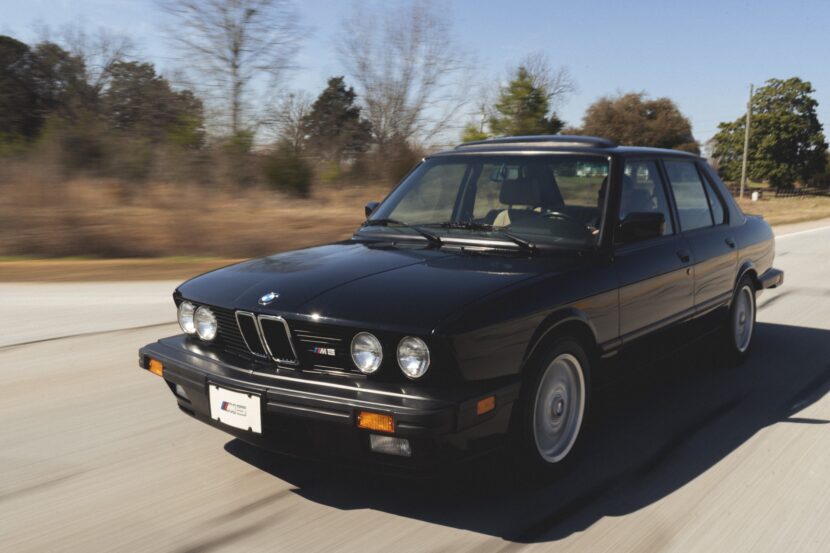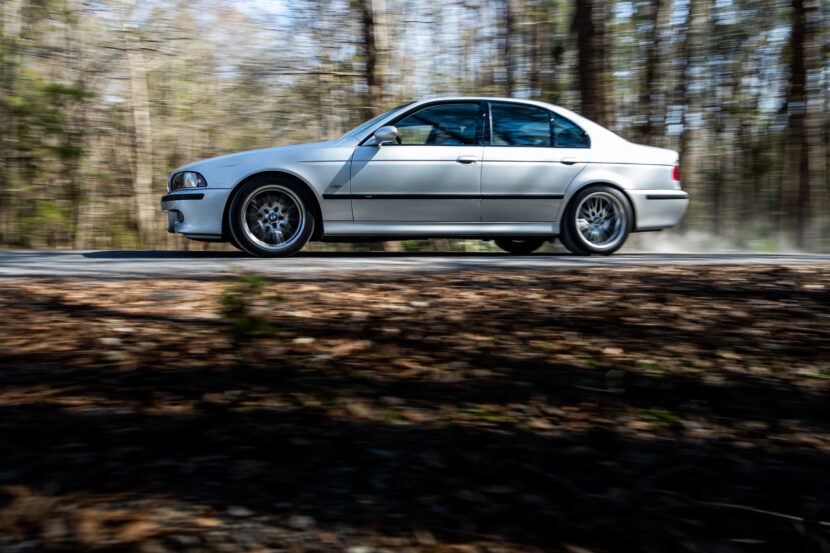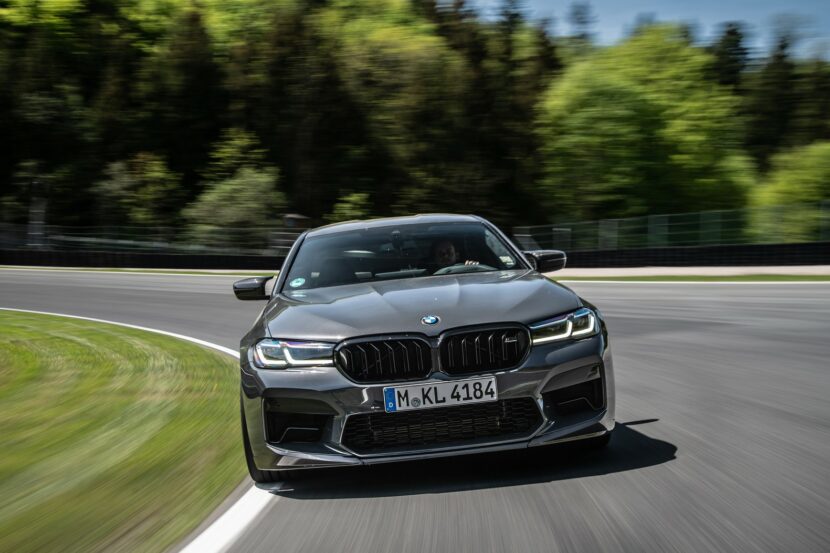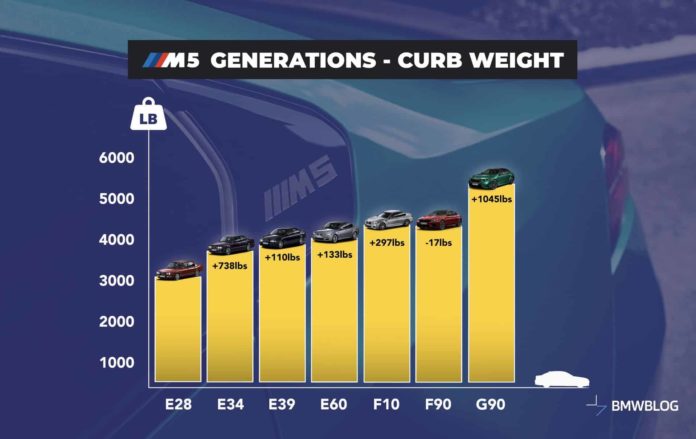The new BMW M5 G90 is setting a new benchmark for BMW, not only in terms of power, but also weight. Despite being the most powerful M5 ever made, and the first ever plug-in hybrid model, the G90 M5 is also the heaviest: 5,390 pounds (2,445 kilograms), marking a significant increase from its predecessors. Therefore, this raises a crucial question: Has the M5 sacrificed too much in the name of progress? In this article, we take a look at all the BMW M5 generations and how their weight changed over time.
The Early Years: Lightweight Agility

The original BMW M5 E28, introduced in 1985, was a revelation. Weighing a svelte 3,153 pounds (1,430 kilograms), it set a new standard for sport sedans. Its relatively low weight contributed to its agile handling and impressive performance, traits that became synonymous with the M5 badge. This balance of power and lightness was a core part of the M5’s appeal, making it a driver’s car through and through.
Incremental Gains: The E34 and E39


As the M5 evolved through the E34 and E39 generations, weight gradually increased. The E34 M5, at 3,638 pounds (1,650 kilograms), and the E39 M5, at 3,737 pounds (1,695 kilograms), still managed to maintain a reasonable balance. These models offered more power and refinement, justifying the slight weight gain. The E39, in particular, is often celebrated as the pinnacle of M5 development, striking an ideal balance between performance, luxury, and driving pleasure. It’s also, arguably, the best looking E39 M5 ever made.
The V10 Era: E60’s Unique Identity


The E60 M5, with its high-revving V10 engine, pushed the boundaries further. Weighing in at 3,869 pounds (1,755 kilograms), it was a heavier car, but the engine’s character and the car’s overall dynamics kept it engaging. The E60 was a bold step with its V10 5.0 liter and a clunky SMG transmission. However, it also marked the beginning of a trend where added weight was becoming more noticeable.
Turbocharged Power: The F10 and F90


The F10 and F90 generations embraced turbocharging, significantly boosting power output. The F10 tipped the scales at 4,123 pounds (1,870 kilograms), while the F90 weighed 4,112 pounds (1,865 kilograms). These models introduced all-wheel drive and a host of technological advancements, further enhancing their performance capabilities. Yet, the increasing weight raised concerns about whether the M5 was straying too far from its lightweight roots.
The G90: A New Era of Excess?


The 2025 G90 M5, with its plug-in hybrid powertrain, represents a new era of performance and efficiency. However, at 5,390 pounds (2,445 kilograms), it is substantially heavier than any of its predecessors. This weight gain is largely due to the hybrid system, which, while delivering impressive power and efficiency, adds significant heft. The question that arises is whether this trade-off is truly in the spirit of the M5 lineage. We will find out more in October when the first press drives come online.
A Historical Weight Comparison of the BMW M5
BMW M5 E28 (1985–1988)
- Curb Weight: 3,153 lbs (1,430 kg)
- Power: 286 hp
BMW M5 E34 (1988–1995)
- Curb Weight: 3,638 lbs (1,650 kg)
- Power: 340 hp
BMW M5 E39 (1998–2003)
- Curb Weight: 3,737 lbs (1,695 kg)
- Power: 400 hp
BMW M5 E60 (2005–2010)
- Curb Weight: 3,869 lbs (1,755 kg)
- Power: 507 hp
BMW M5 F10 (2011–2016)
- Curb Weight: 4,123 lbs (1,870 kg)
- Power: 560 hp
BMW M5 F90 (2017–2023)
- Curb Weight: 4,112 lbs (1,865 kg)
- Power: 600 hp
BMW M5 G90 (2025)
- Curb Weight: 5,390 lbs (2,445 kg)
- Power: 717 hp

